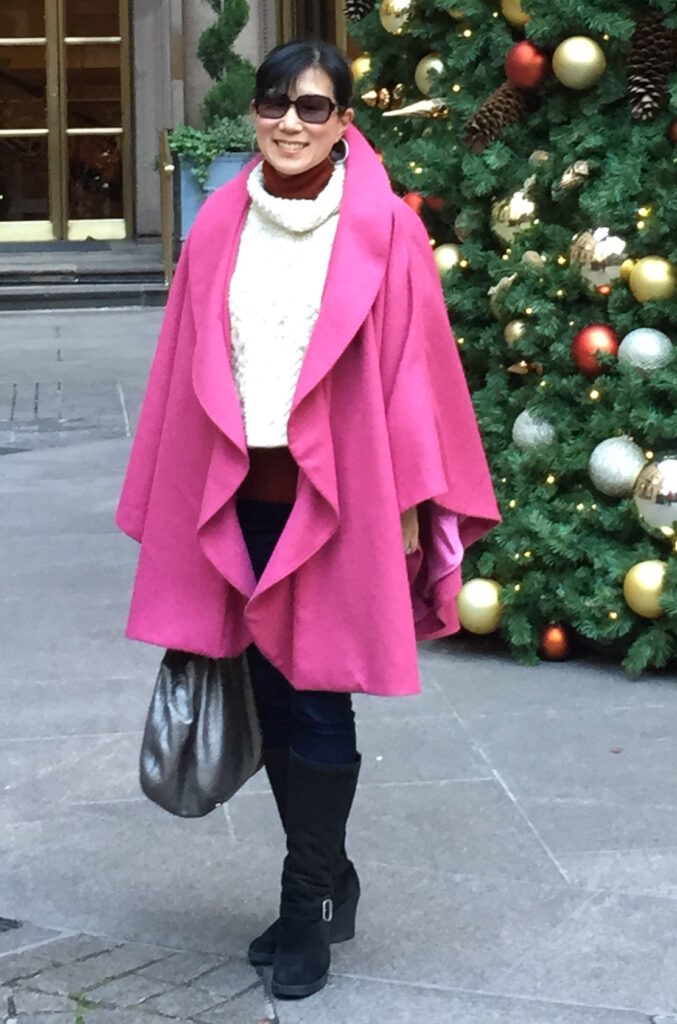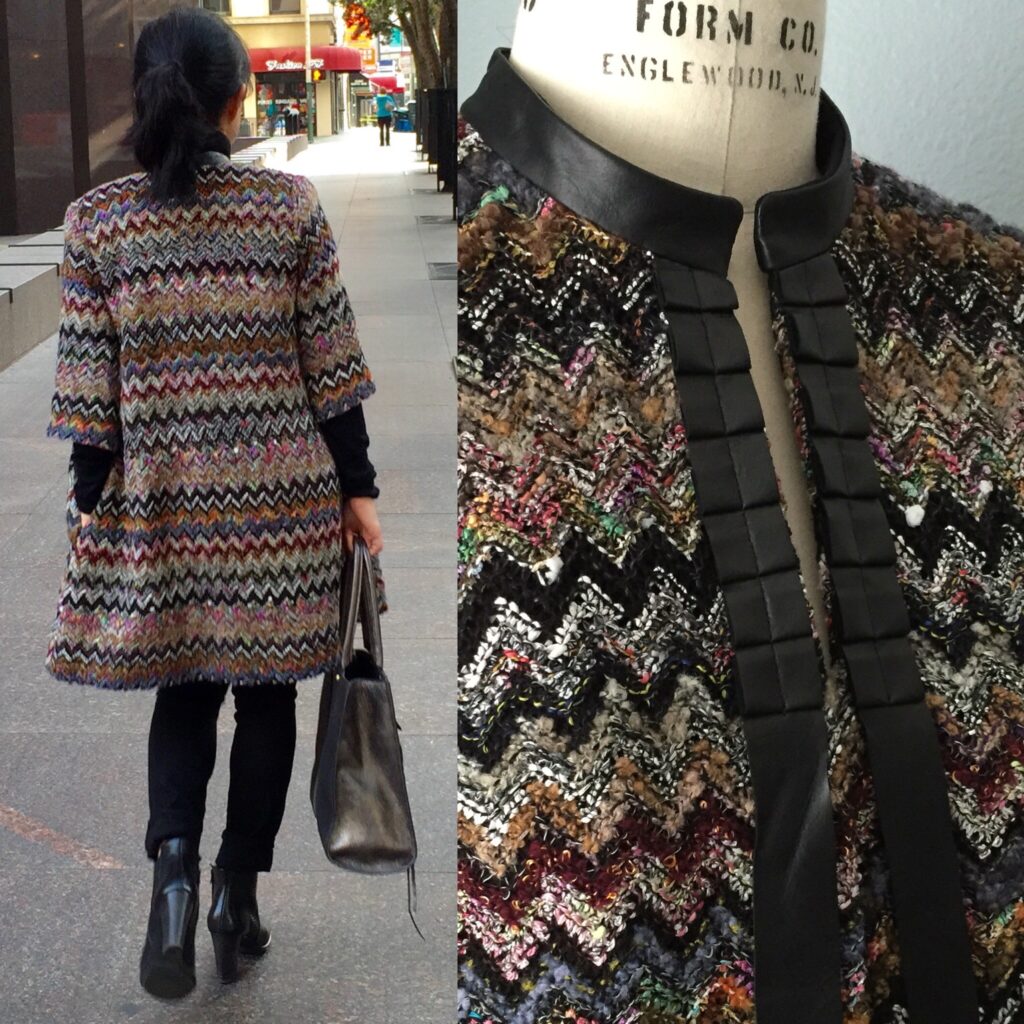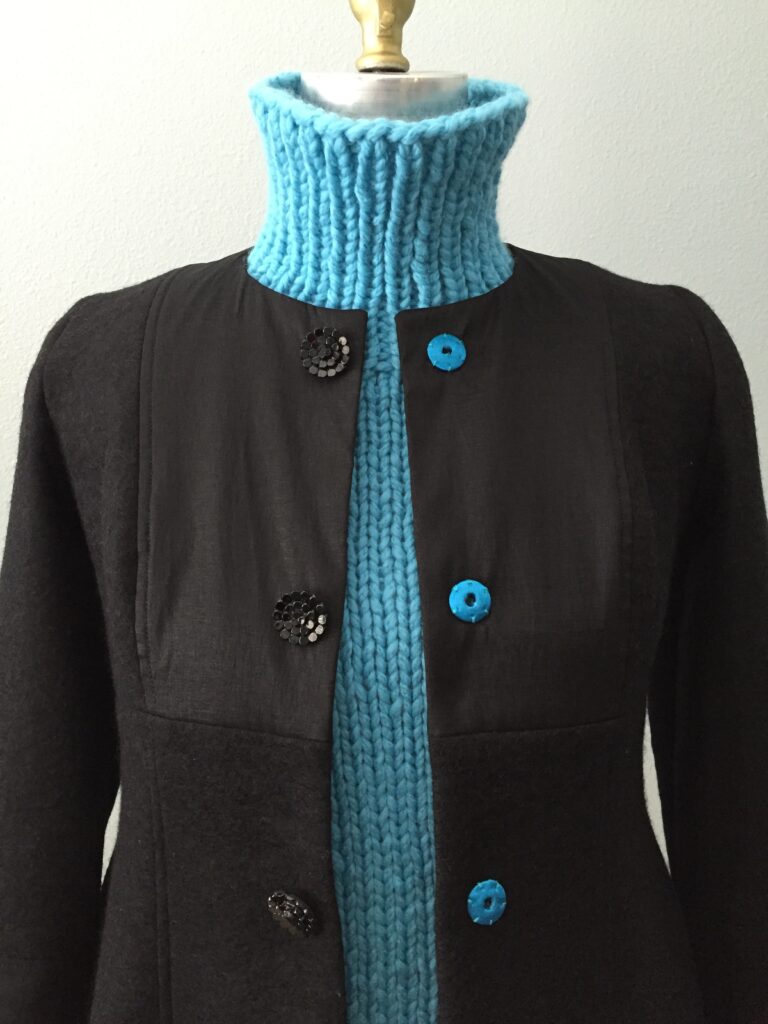I need a travel coat, I thought, as I stood at the crowded Southwest Airlines gate waiting for my flight to southern California. It was my second flight in two weeks to see my aging parents and help them with house and health. The airport was packed with people traveling for the New Year’s weekend, so I was feeling especially cranky — and particularly schlumpy — in my faded pink fleece jacket with the broken zipper pull.
Perhaps the whole “new year new you” stuff was getting to me. Or maybe it was the hard realization that 50 might not be the new 30 — and pulling off a “schlumpy is cute” vibe wasn’t happening. I’m not exactly sure. But the desire to transform into a polished and pulled together traveler by shedding the old fleece jacket for a lovely travel coat overwhelmed me. My imagination started to churn! But first …
What Makes a Travel Coat Special?
Or more to the point, what is a travel coat anyway?
Well, any coat or outerwear that you choose to wear when you travel can be called a travel coat. A duster, a cape, a trench, a puffer, a parka, a wool coat — all of these can be considered travel coats.
But to me, a travel coat is more than just a practical piece of outerwear that warms and protects from the elements.
It infuses a feeling of confidence and calm during stressful times at airports and new places — knowing that you look good, which translates into feeling good about yourself. Importantly, it makes a statement to the world — of who you are and how you want to be seen.
I loved wearing my Flounce Cape for a trip to New York City at Christmastime (below). With a vibrant color and pretty details, I felt so chic!

Elements of a Good Travel Coat
My ideal travel coat is versatile, comfortable, functional, and above all, stylish. Whew — that’s a lot to ask of one garment! Also, different locations may require different types of travel coats (or no coats at all). When designing a travel coat for urban locales, some elements I’m considering are: silhouette, fabric, and closures.

Silhouette
The silhouette of a garment is its overall shape or structure. For outerwear, common silhouettes are tailored, oversized, fitted, or A-line. An oversized travel coat that has a lot of volume might be a bit unwieldy to wear on a plane or a train, while a fitted piece might feel too restrictive and uncomfortable. Perhaps a tailored shape with enough ease for comfort or an A-line shape might work best.
In terms of length, while I love the drama of a full-length coat, I think one that hits no longer than knee-length would be ideal for travel.
Fabric
Fabric choice comes down to personal preference, but I’m a fan of wool. Yes, wool for travel! Wool fabric is not only beautiful — it has the following properties:
- Breathable
- Keeps you warm and cool
- Wicks away moisture
- Stain, UV, and odor resistant
- Anti-wrinkle
- Renewable
Some possible fabric choices are boiled wool (love!) and thick wool/cashmere knits (luxurious!).
Closures
Buttons, snaps, hooks, or other types of closures are definitely needed but I would keep them to a minimum. I’ve worn no-closure styles but I find them to be fussy when trying to wrangle suitcases and travel bags. A tie belt is very chic, but only if its function is to add style (there needs to be a button or snap to do the real work of keeping the coat closed).
While the glass buttons and silk-covered snap closures on my Lantern Coat (below) are a bit fancy for a travel coat, they certainly add a nice bit of pop!

Stay Tuned
My mind is whirring with ideas, so stay tuned for future posts on the evolution of my 2024 Travel Coat!
Also, check out the Design Gallery for some of my Outerwear designs.
Additional Reading
I found some interesting articles about the history of travel clothing. Worth a peek!
The Intersection of Travel and Fashion: Then, Now, and the Future

Leave a Reply